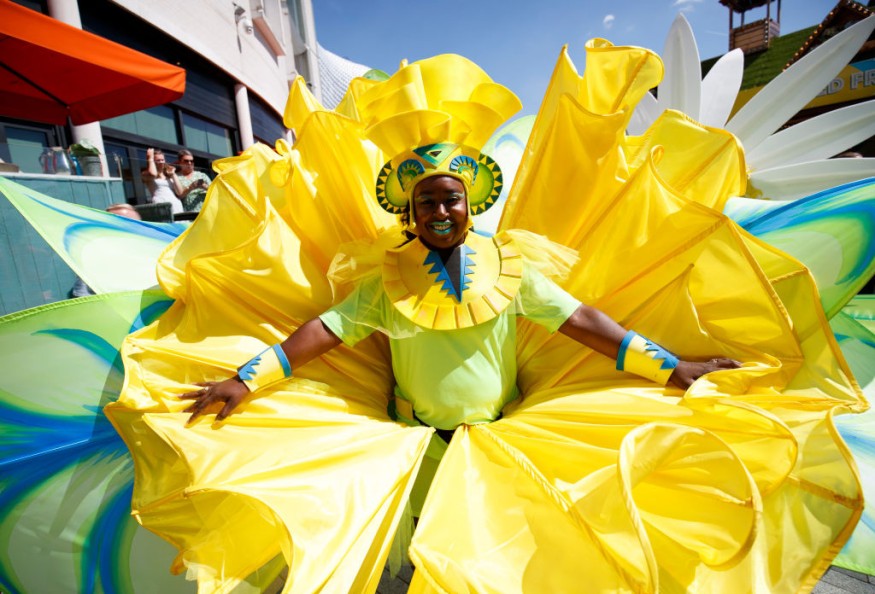Trinidad and Tobago: Here's What You Need to Know About Its Culture, Language, and Social Beliefs

Trinidad and Tobago has a rich history, with its culture reflecting the influence of many different cultural traditions.
Portuguese, Amerindian, Indian, African, Spanish, Chinese, and other civilizations have significantly impacted the Caribbean country's culture.
English is widely used throughout the country due to its historical ties to the United Kingdom. The history and cultures of various regions of Trinidad and Tobago are also unique from one another.
Trinidad and Tobago's Culture, Language, and Social Beliefs
Let's take a look at some of the basic aspects associated with Trinidad and Tobago's culture, language, and social beliefs.
Religion
The three largest religions of Trinidad and Tobago are Roman Catholicism, Hinduism, and Islam. There are a wide variety of smaller religious communities in the country, including the Sikhs, Jews, Buddhists, Anglicans, Methodists, Presbyterians, Traditional African Religion, and Taoists, among others.
Spiritual Baptist, Yoruba/Orisha, and two Afro-Caribbean syncretic religions are the fastest-growing religious communities in Trinidad and Tobago.
Fundamentalist and evangelical churches that mimic their American counterparts are likewise growing in popularity.
Festivals
One of the most well-attended events in Trinidad and Tobago is the Carnival, a tradition brought to the country by the French.
As a result of the 1838 abolition of slavery, the habit of celebrating the holiday quickly spread throughout the free population.
Pastelle, fruit cake, black cake, and other sweet bread are eaten during Christmas celebrations, and parang, a traditional style of music, is also played.
Diwali, Phagwah/Holi, and Shivratri, three Hindu festivals, are also celebrated in Trinidad and Tobago.
Hosay, the local form of the Shia Muslim Remembrance of Muharram, is also being observed by Muslims in the country.
Music, Theatre, and Literature
The musical genre known as calypso has its roots in the Caribbean nation of Trinidad and Tobago. It is a type of Afro-Caribbean music that became popular throughout the Caribbean and in Venezuela.
Its roots can be traced back to the 18th-century introduction of enslaved Africans brought to the Caribbean by French colonists. Soca, which combines elements of calypso with Indian music and rhythms, is another genre that originated in Trinidad and Tobago.
The country has distinct musical forms, such as the Indian-influenced Chutney and the Soca-influenced Chutney Soca.
Rapso is a genre that emerged in the 1970s as a combination of Calypso and Soca in response to social upheaval in the country.
Parang was created in Trinidad and Tobago as a fusion of Latin American and Caribbean musical styles. The music genre known as Pichakaree also has a fusion of English and Hindi spoken in the country.
The Little Carib Theatre was the first Trinidad and Tobago folk dance troupe. Indian dramas like the Ram Leela are also integral to Trinidad and Tobago's cultural heritage.
The country has also produced several notable authors, including Nobel winners Sir Vidia Naipaul, Michael Anthony, and Earl Lovelace.
Calypso is considered an oral form of literature in Trinidad and Tobago, with modern calypsonians like Mighty Sparrow, Mighty Chalkdust, Lord Kitchener, Drupatee, and others.
Trinidad and Tobago is also home to several renowned painters, such as Michel Jean Cazabon (1813-1888).
Social Beliefs
The women in Afro-Trinidadian households in Trinidad and Tobago are often the breadwinners and decision-makers. Women head many multigenerational households.
Despite women's academic successes, they continue to be paid far less than males, especially in the commercial sector.
Marriage customs in Trinidad and Tobago vary widely from one socioeconomic group to another. Nonresidential dating, common-law marriage, and legal marriage are typical of Afro-Trinidadian marriage customs.
Arranged marriages are becoming less common in the Indian community, while young Indians are more likely to engage in nonresidential partnerships.
Many Indians still hold racist views of African Americans that date back to colonial times, making them reluctant to marry someone from the minority.
Indian wedding traditions once dictated that the woman move in with the groom's family, but times are changing, and neolocal living is on the rise.
Gender-based conflicts over the inheritance of land are widespread among Afro-Trinidadians, a population for which inheritance is not strictly patrilineal.
Parents in Trinidad and Tobago place a premium on education, and many make sacrifices so that their children can pursue and succeed in postsecondary studies and professional careers.
Societal distinctions between ethnic groups and economic strata are significant there. Sociability is encouraged outside of business settings.
Being on time is not always expected, and chronic tardiness is prevalent in the country. In rural areas, it is considered polite and vital to the culture of Trinidad and Tobago to extend a warm greeting to those passing by.
Languages
The language of government and law in Trinidad and Tobago is English. Trinidadian English, or Trinidad and Tobago Standard English, is the official name for the language.
The media, government agencies, schools, and colleges teach and communicate with the public using this language. Other popular languages in the country are Trinidadian English Creole, Tobagonian Creole, and Trinidadian Hindustani,
READ MORE : Dominican Republic Culture: Customs You Must Observe When Visiting the Country in the Caribbean
This article is owned by Latin Post.
Written by: Bert Hoover
WATCH: TRINIDAD & TOBAGO CARNIVAL: The Magic and The Madness - From MASX Entertainment
Subscribe to Latin Post!
Sign up for our free newsletter for the Latest coverage!

















